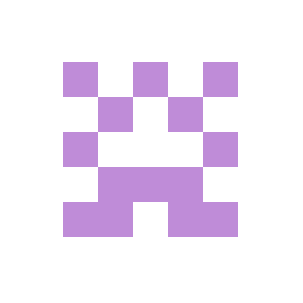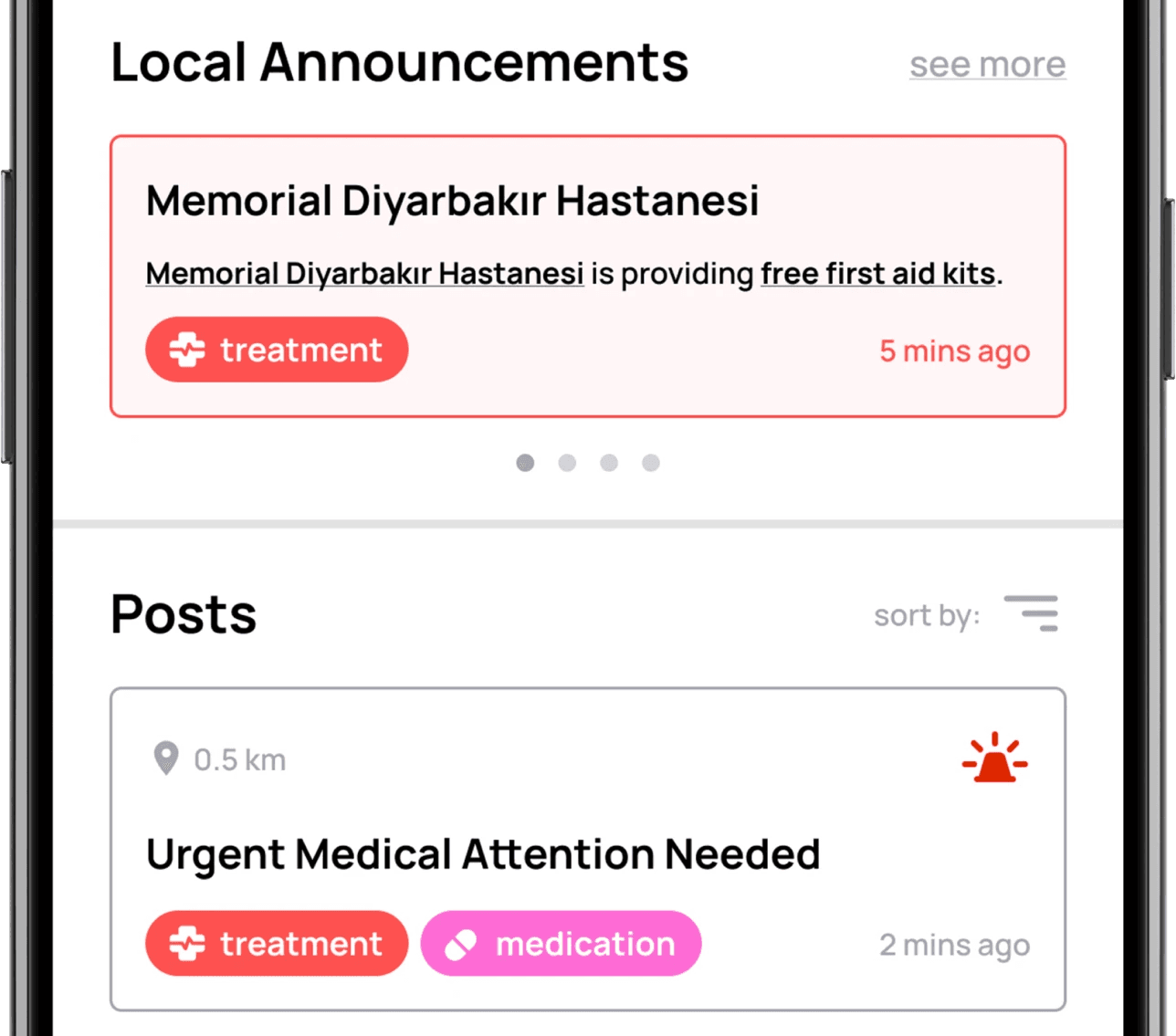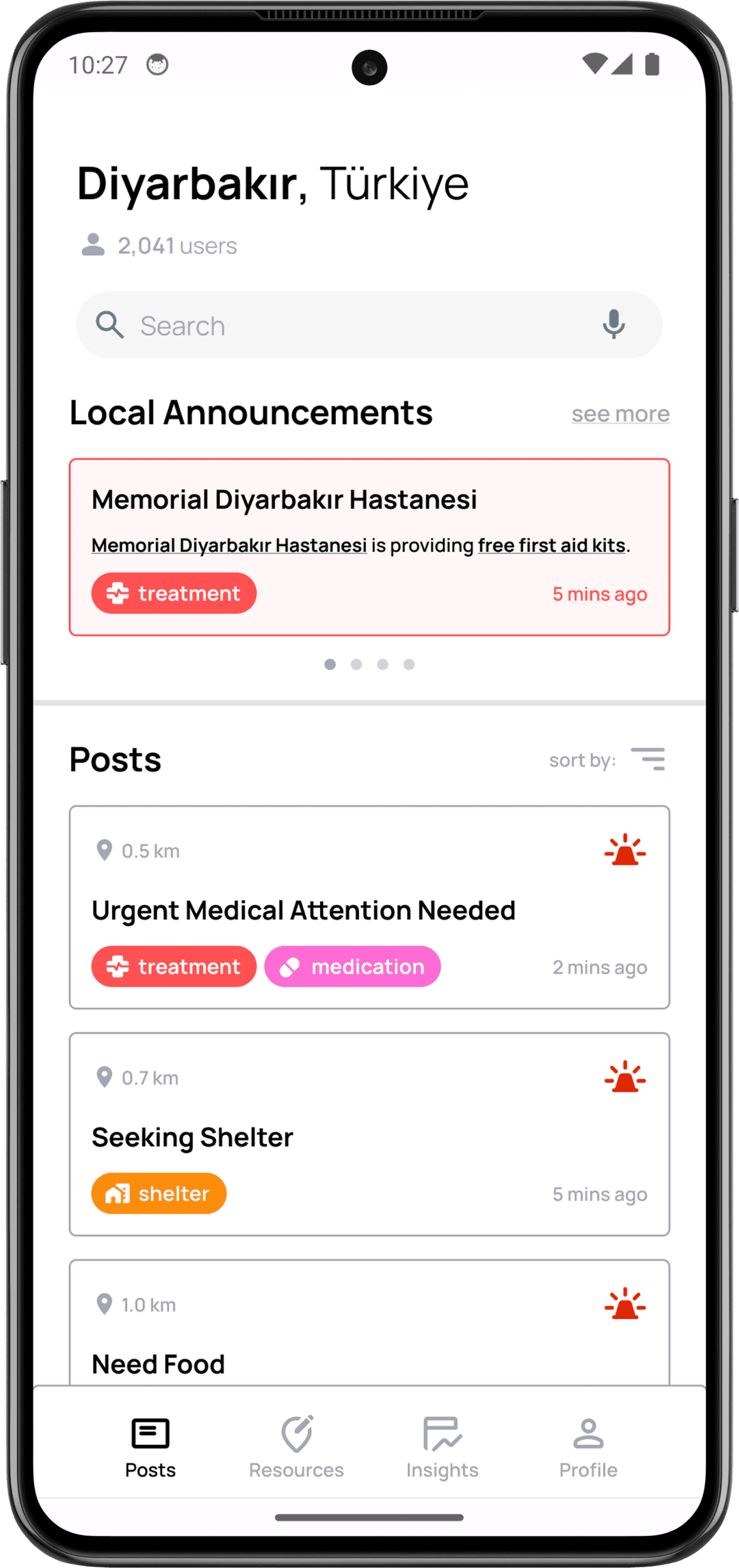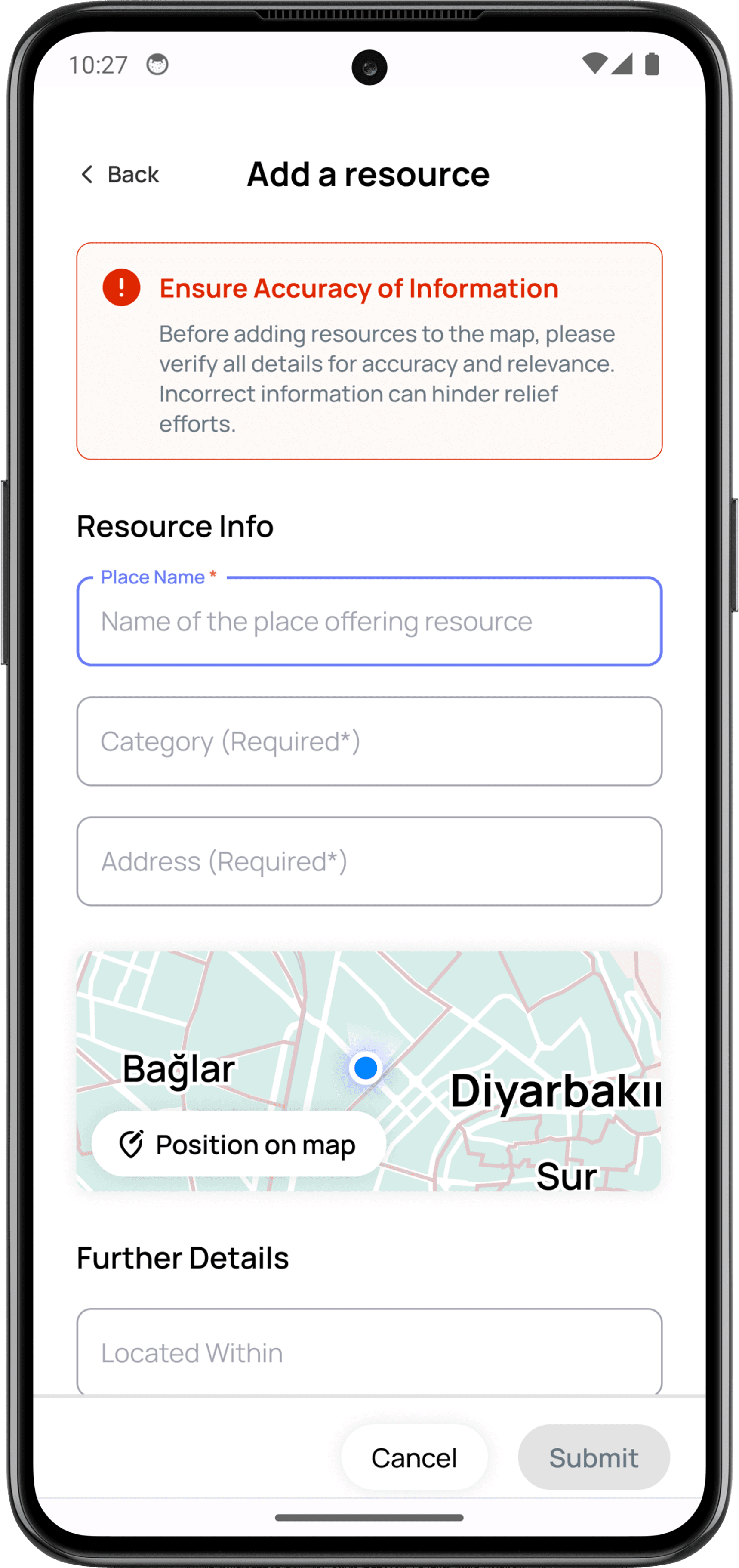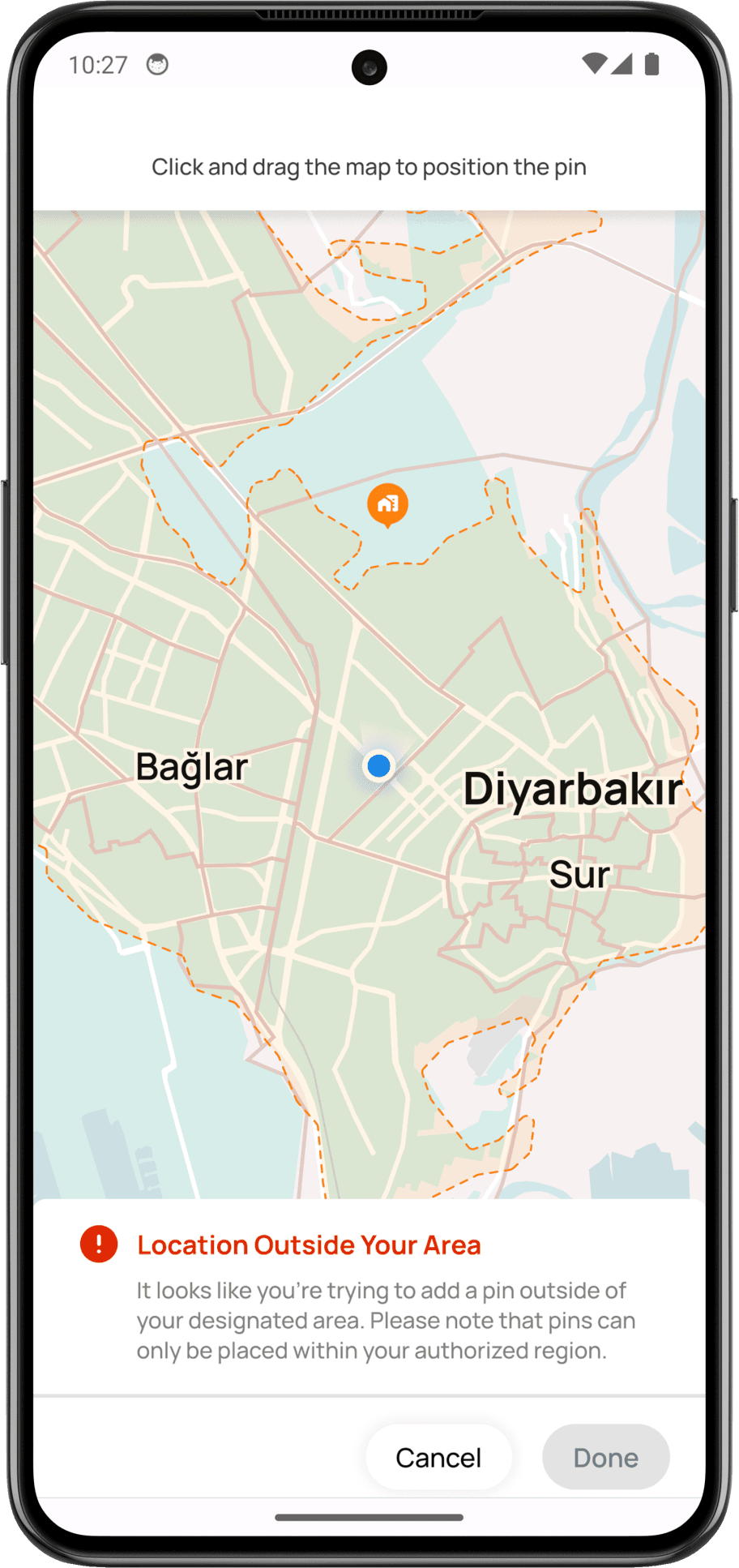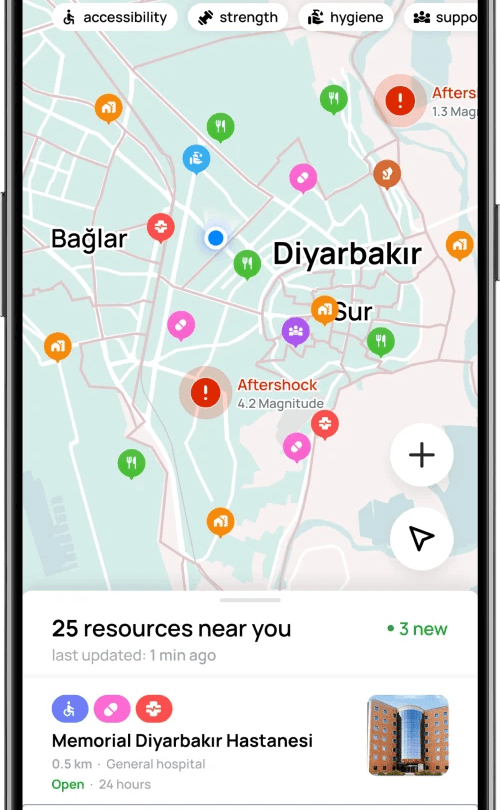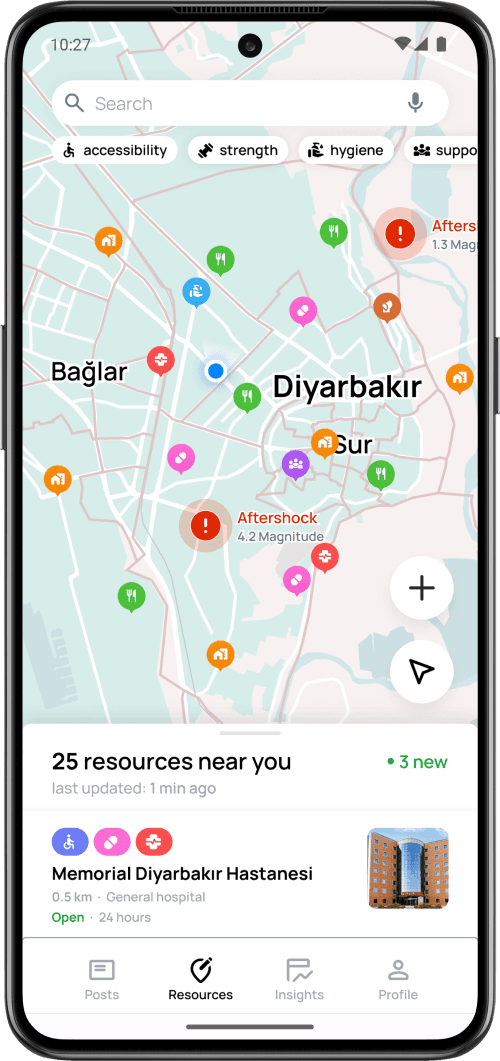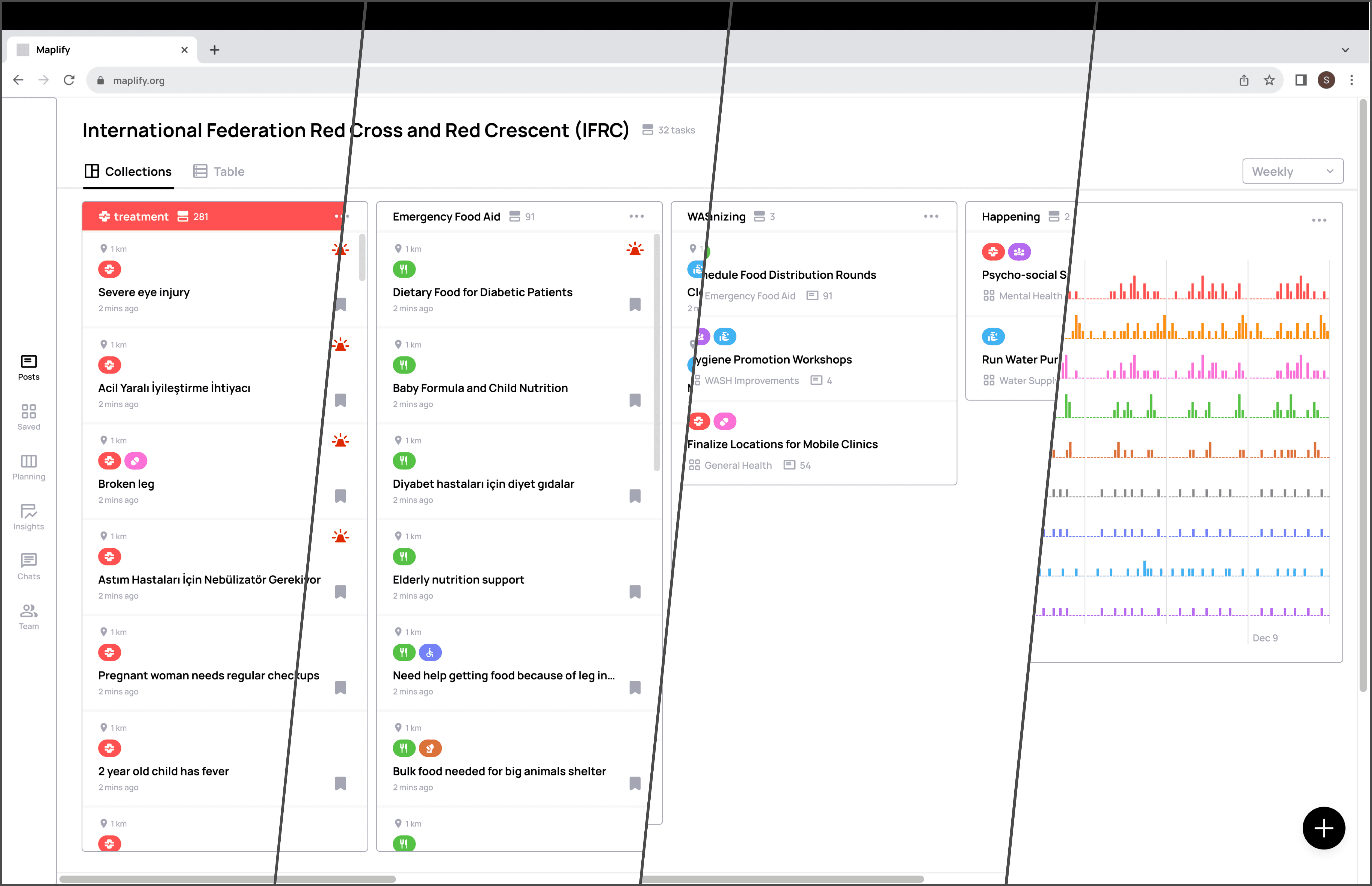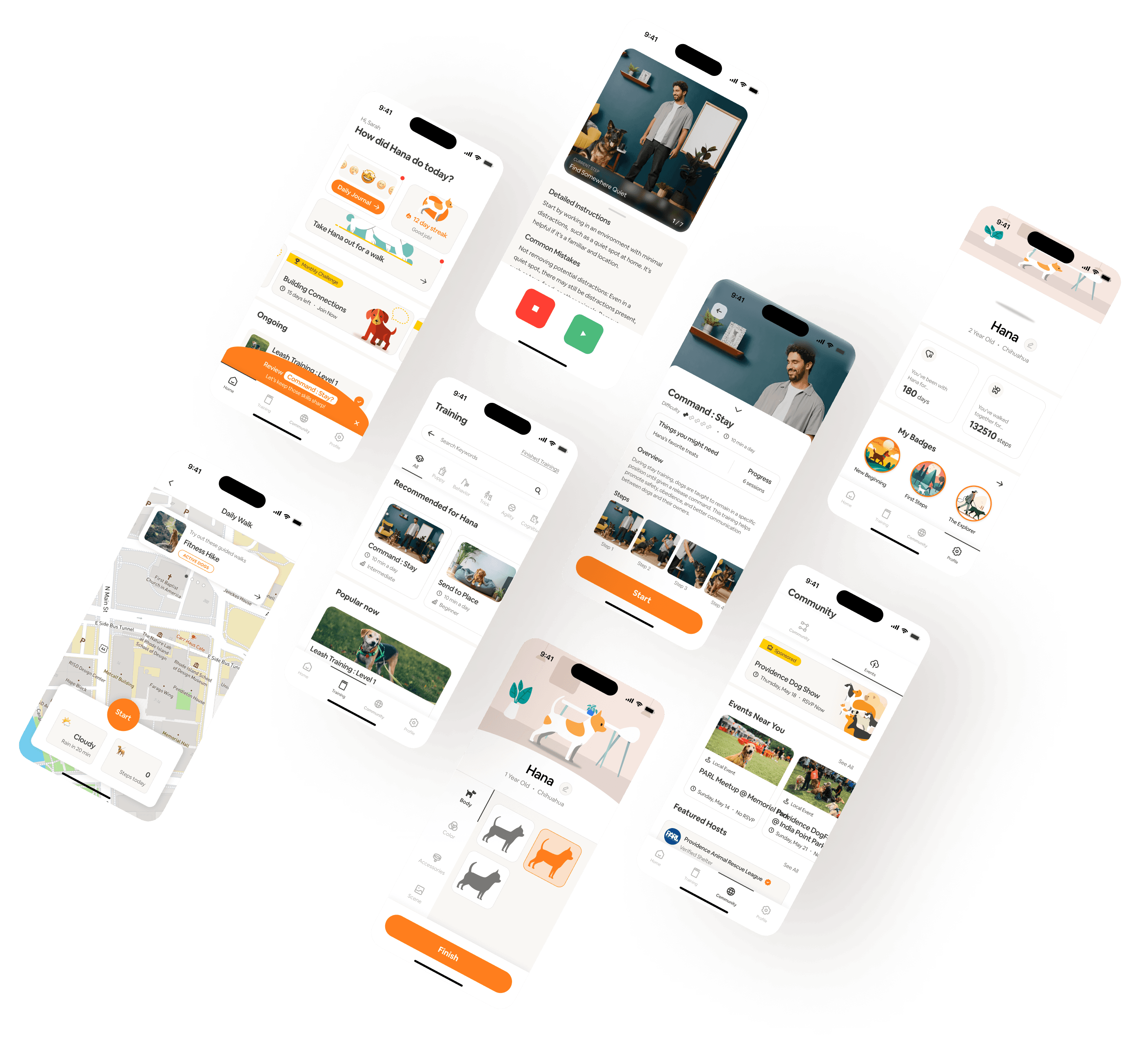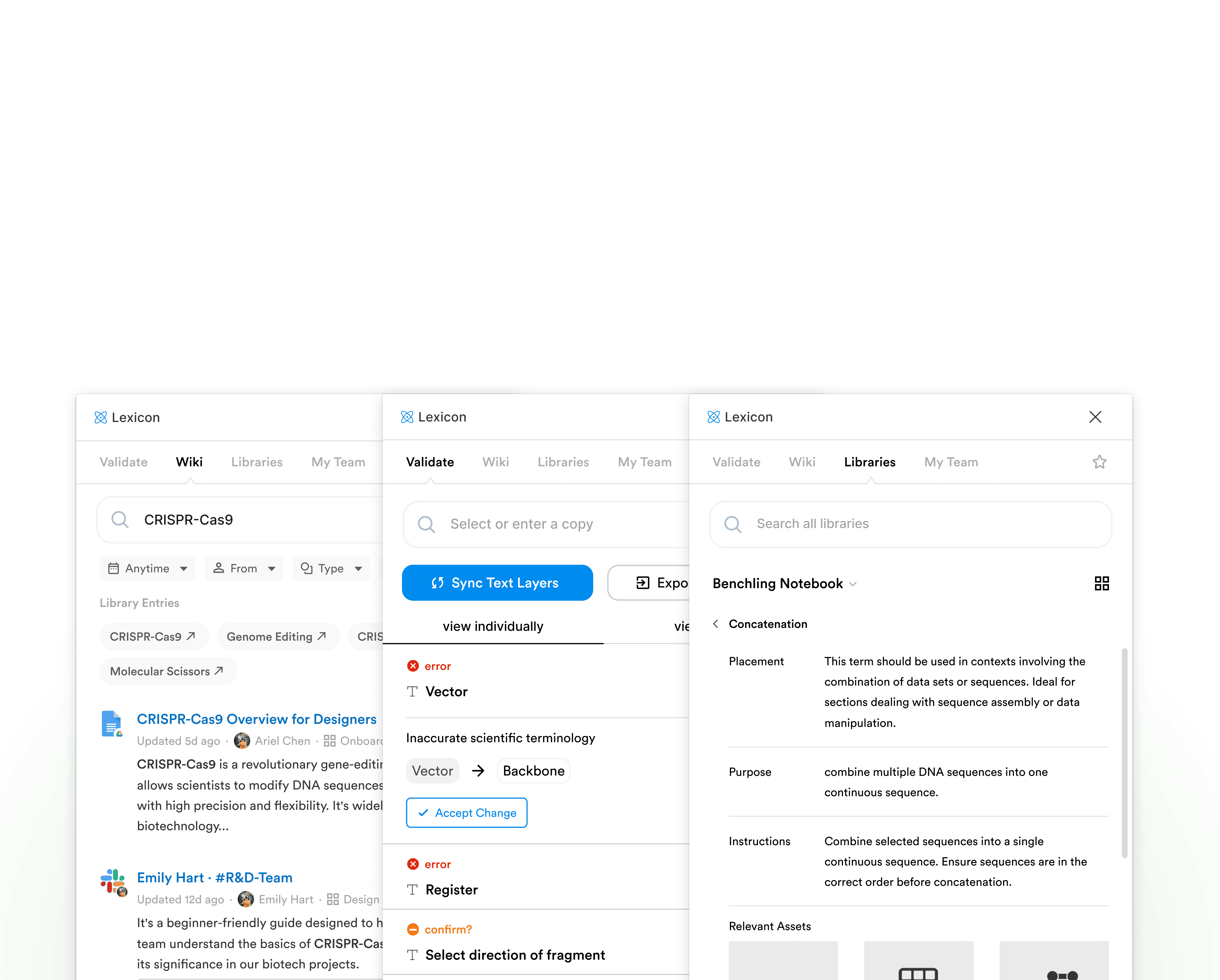Designing for Community Disaster Resilience
How can we streamline the dissemination of local resource information to ensure that individuals during disasters receive accurate and timely support?
Type
Hackathon
Team
Sunjoo Park - Richard Fu - Yiyang Zhang
Toolkit
Figma
Year
2023
01 . Overview
Context
The Gap in Aid Delivery
On February 6, 2023, a 7.8 magnitude earthquake hit regions of Turkey and Syria, followed by a 7.7 magnitude aftershock, causing severe destruction. Nearly 300,000 buildings were affected, leaving millions homeless and resulting in over 50,000 fatalities.
p1. The 2023 Türkiye / Syria earthquake was among one of the worlds most deadly earthquakes, especially after 2010.
UN agencies and International international non-governmental organizations (INGOs) alike criticized the humanitarian response and short comings of the relief efforts. Issues raised ranged from the slow pace of the response to critiques regarding the appropriateness of aid delivery. Similar to many prior emergencies, concerns were raised that the type of assistance delivered and the skill sets of international humanitarian responders did not match the needs of affected populations.
Humanitarian assistance continues to employ a “cookie cutter” or “top down” approach, as opposed to one which is guided by the concerns and needs of communities affected by conflict and disaster. While a variety of needs assessment tools have been developed and promulgated by UN agencies and INGOs in recent years, their use, especially in the early phases of an acute onset disaster, have been limited by the time and resources required to collect data from affected populations.
Project goal
Rethink Top-down Disaster Relief
To address these challenges, there is a pressing need for a paradigm shift in humanitarian response - one that is more adaptive, inclusive, and responsive to the specific contexts and needs of affected communities. Developing and implementing strategies that prioritize local engagement and capacity building, while ensuring rapid and efficient aid delivery, remains a significant challenge in the field of humanitarian assistance.
Therefore, our goal was
To develop an efficient and effective system for disseminating local resource information through the community, ensuring that individuals in disaster-affected areas receive accurate and timely support.
02 . Methodology
Strategy
Ecosystem in Diverse Cultural Settings
To effectively address cultural variations, particularly in contexts like Syria where fewer women own mobile devices, we have collaborated with disaster response experts to create a more inclusive and adaptable platform, Maplify.
p2. A graph to illustrate the ecosystem planned for dissemination of the platform
This platform leverages the traditional system where community members convey their needs to respected leaders, such as priests, who then communicate these needs to aid organizations. Maplify taps into this established network, identifying individuals within the community who have access to mobile devices. These individuals are instrumental in both disseminating vital information and collecting new data about the community's needs, thereby creating a continuous feedback loop. This process allows us to keep our response strategies up-to-date and in alignment with the evolving situation on the ground, ensuring a more effective and responsive aid delivery.
SOLUTION
Community-based Crisis Relief
Community-driven Info
+
Localized Aid
+
Centralized Platform
Our platform, Maplify, accelerates disaster relief by empowering communities to directly contribute to and benefit from aid efforts. This platform centralizes data collection and dissemination, ensuring that aid is tailored to the specific needs of each community, facilitating more efficient and effective disaster response.
03 . Features
Feature no.1
Community Help
The home page of the platform displays current needs and urgent updates from the community. These posts are organized into different categories for easy browsing and are sorted by location.
Additionally, local updates from well-known non-profit organizations are also shared on the platform, as well as information potentially from local organizations – essentially, the home page is a central hub for information and resource seeking.
Feature no.2
Collaborative Resource Map
Feature no.3
Turn Data into Tangible Aid
Through the insights feature, users and organizations alike can gain a real-time understanding of the disaster – number of individuals impacted, the challenges they face, and the resources they urgently require.
By leveraging community-generated data, we provide a clear lens to the situation, enabling fast and effective action. Through this, we can transform raw data into meaningful insights, and those insights turn into tangible aid for those in need.
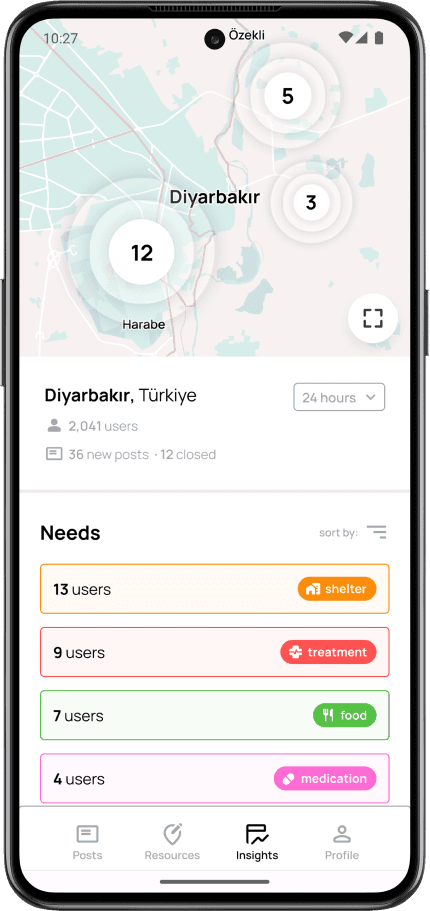
FOR ORGANIZATIONS
NGO & Org Portal
The NGO Portal is an integrated platform designed to empower NGOs in their disaster response efforts, bringing together essential tools for identifying needs, organizing response efforts, and leveraging data for informed decision-making.
p3. Four main features in the NGO portal: Organized Posts, Collections, Kanban Board, and Insights dashboard. (from left to right)
The platform's main page categorizes community requests and needs, enabling NGOs to efficiently identify and address a range of situations, from immediate relief to long-term support. The Saved Page allows NGOs to bookmark posts, organizing them into custom collections for future reference, aiding in strategic planning and targeted response. The Planning Page offers an intuitive Kanban board for task management, assisting in organizing supplies, coordinating volunteers, and tracking progress for timely crisis response. Additionally, the Insights Page provides essential data analytics and trend infographics, offering a comprehensive understanding of the disaster's impact and community needs, facilitating data-driven decisions for more effective interventions.
More…
Video Demo
Here is a simple video demo of the platform, which shows the basic functionalities on the mobile end.
Thank you
